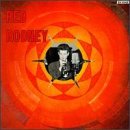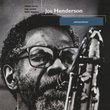| All Artists: Red Rodney Title: Fiery Members Wishing: 0 Total Copies: 0 Label: Savoy Jazz Release Date: 6/15/1994 Genres: Jazz, Pop Style: Bebop Number of Discs: 1 SwapaCD Credits: 1 UPC: 081757014823 |
Search - Red Rodney :: Fiery
 | Red Rodney Fiery Genres: Jazz, Pop
|
Larger Image |
CD DetailsSimilar CDs
|
CD ReviewsHot, emotional modern jazz Bomojaz | South Central PA, USA | 11/09/2005 (5 out of 5 stars) "This 1957 date, originally done for Signal and subsequently issued on Savoy, is one of Red's finest. It also marked a high water mark in his career: it was the last thing he would record (other than an obscure session for Argo two years later) for the next 16 years, the result of a very bad drug habit. The album starts off with a long version of STAR EYES, a tune Red's mentor and hero Charlie Parker recorded twice. It's done medium tempo and pianist Tommy Flanagan really shines. Four of the remaining five selections are done up-tempo (thus the CDs title), and both Red and tenor sax man Ira Sullivan cook on these titles. Best is RED ARROW, a Frank Wess composition, that has a handsome theme out of which Red comes wailing; on this track Sullivan plays trumpet and he and Rodney duel each other in fours and then twos to the end. It's a great performance. YOU'D BETTER GO NOW, a pretty Frank Foster ballad, is played beautifully by Red and Ira on tenor. The rhythm section of Oscar Pettiford (b) and Philly Joe Jones (d) is rock solid throughout. It's a shame that such a high quality album should mark the last from Red for such a long time to come, though we can be thankful it was made before the fall. An excellent CD; definitely worth checking out." Red is on Fire Michael B. Richman | Portland, Maine USA | 06/30/2000 (5 out of 5 stars) "This album was a pleasant surprise. I usually don't go for Savoy titles because they were typically, quickly arranged jam sessions, and the results sometimes painfully show. But Fiery is cut from a different cloth. Even though the session was recorded on two different days (11/22 & 11/24/57), and with two Joneses (Philly Joe and Elvin) spliting time at the drums, the album has a wonderful cohesion. I find this is due to the musical understanding Red and Ira Sullivan have. Ira, playing tenor here, also plays trumpet (and wonderfully on the Blue Note "J.R. Monterose") and seems to know what to serve Red. All in all this is classic hard bop, and it will not disappoint." The Red Arrow. You can stop your search. Samuel Chell | Kenosha,, WI United States | 05/24/2005 (5 out of 5 stars) "Why Savoy Jazz would retitle a classic session, insuring collectors would despair of finding a reissue, defies the logic of anyone even remotely close to the music on the disc. I've bought at least a dozen albums in search of music that would represent either Red Rodney or Ira Sullivan as I heard them in live contexts. My mistake was in picking up too many recordings made after the mid-seventies, none of which was particularly memorable let alone worthy of repeated listening.
"The Red Arrow," originally released in 1957, proved to be right on target. Start with a rhythm section that's the stuff that dreams are made of: Oscar Pettiford, Mingus' only rival; Tommy Flanagan, the elegant version of Bud Powell; Philly Jo Jones (side 1), the most influential drummer after Roach; Elvin Jones (side 2), the most influential drummer after Philly Jo. Far from overshadowing their less-renowned frontline, the magic of this quintessential rhythm team rubs off on Red and Ira, contributing to a mainstream bop session that's warm, unforced, continually inventive, not so much "fiery" as simmering and purring. As many times as I've heard "Star Eyes" and "Stella," both of these overdone standards sound fresh and full of life in the hands of this particular assemblage of giants at this particular juncture in American music history. Ira plays trumpet on only one tune (probably to Red's relief), complementing Red's playing on all the other tracks with his tenor. The recording quality is as "classic" as the music, with no extraneous boost of Pettiford's bass or the ride cymbals, and no "Van Gelderized" over-miking of the piano sound. The individual voices are clearly heard even as the cohesiveness of the whole leaves a glowing impression." |

 Track Listings (6) - Disc #1
Track Listings (6) - Disc #1
